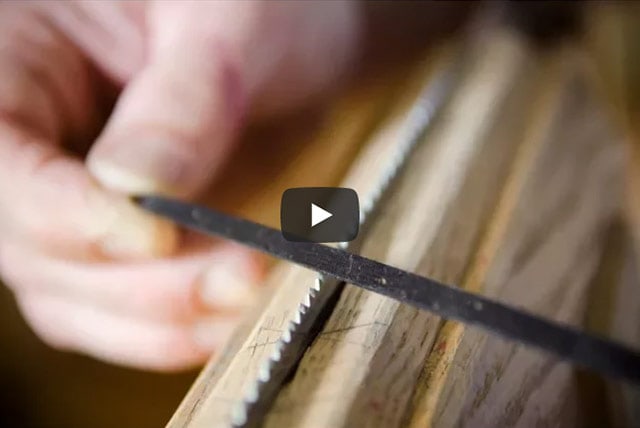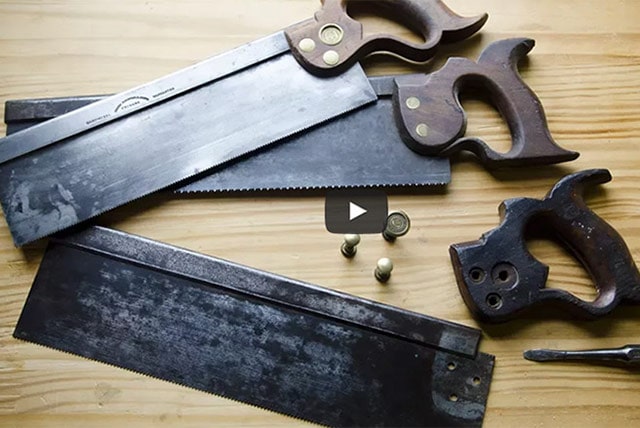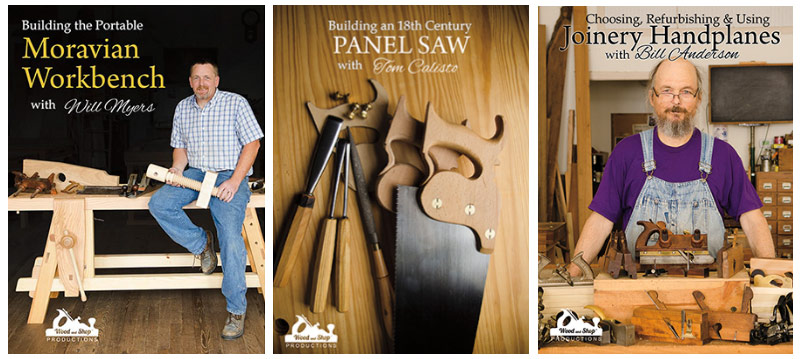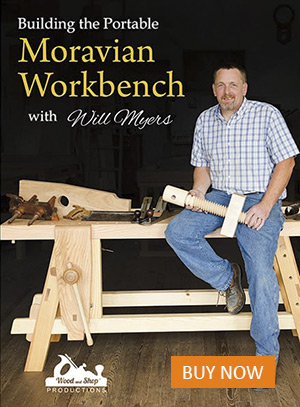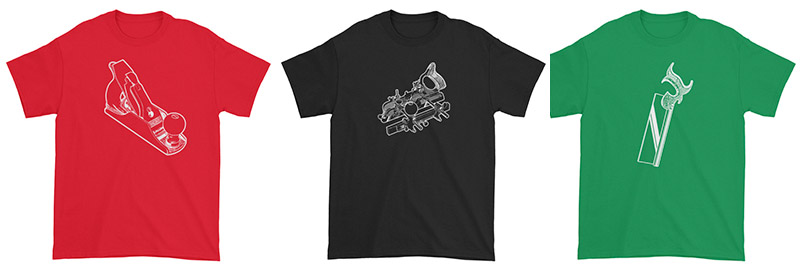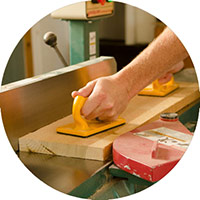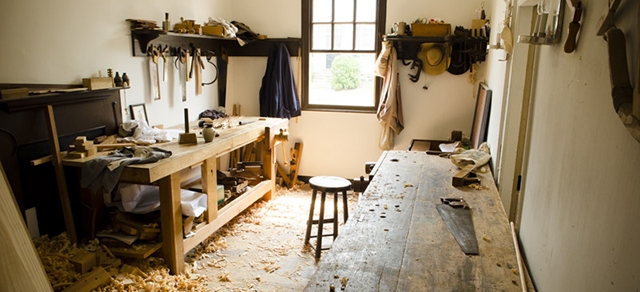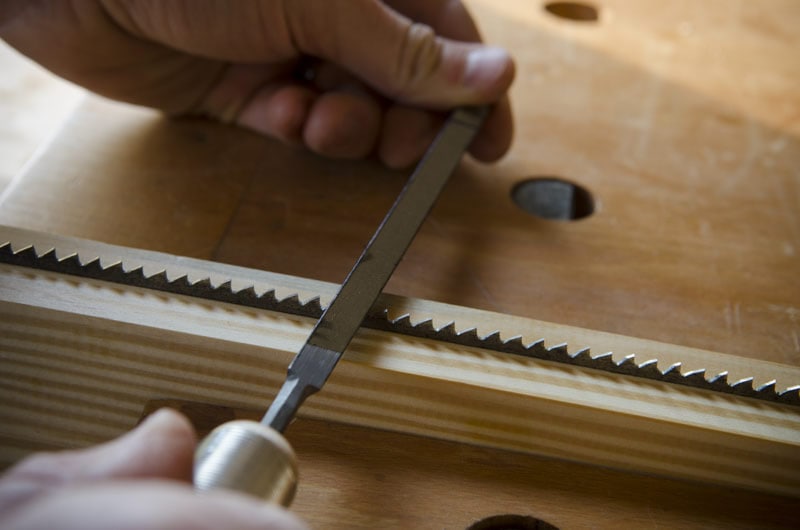
Disclosure: WoodAndShop.com is supported by its audience. When you purchase through certain links on our site, we may earn a small affiliate commission, at no cost to you. Learn more.
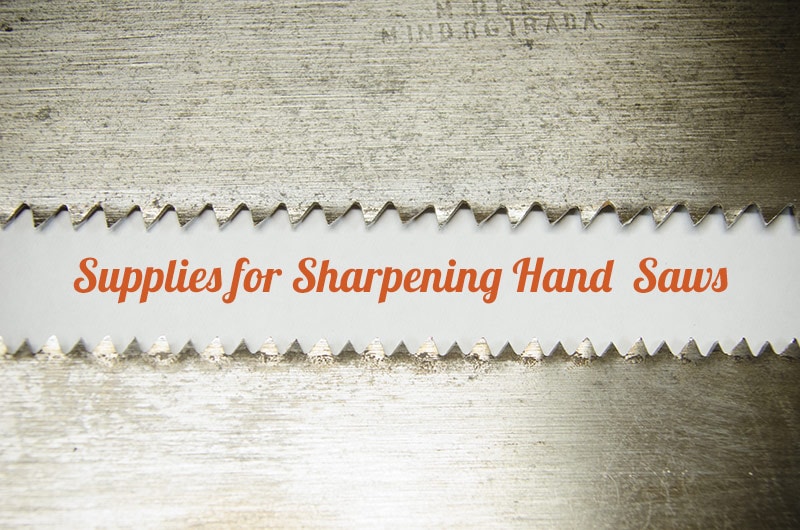
Introduction: Hand Saw Sharpening Supplies
Saw sharpening is an important skill for woodworkers to master, and having a sharp hand saw will make a big difference for woodworkers when building furniture. A sharp hand saw makes your cutting faster and cleaner. Yes, you could send your hand saw off to be sharpened, but chances are, most local saw sharpening services won’t really be familiar with saw sharpening for old hand saws.
With a few tools and some practice, you can sharpen your own hand saws much better than by having someone else sharpen it. Here are a couple of our saw sharpening videos & articles to help you sharpen your hand saw and refurbish your hand saw:
“How to Sharpen Hand Saws for Woodworking”
In this article and video, expert hand saw maker Tom Calisto shares his saw sharpening lesson for sharpening a hand saw..
“Understanding & Restoring Antique Handsaws”
In this article and video, expert hand saw maker Tom Calisto goes into detail on refurbishing an antique back saw…
Make or Buy a Hand Saw Vise for Sharpening
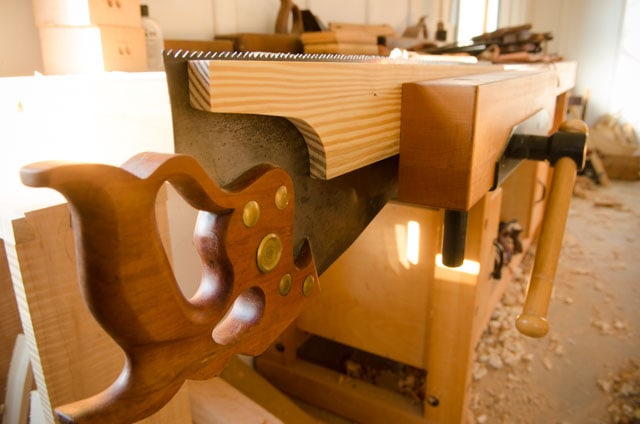
A hand saw vise for sharpening holds the steel saw plate of your hand saw while you sharpen your wood hand saws. A saw vise must hold the saw plate firmly, and clamp firmly to a workbench or other work surface, without much movement. I’ll talk about both making a hand saw vise and buying a hand saw vise:
If you are able, it is a great idea to build your own wooden saw vise. Here is a nice video by Shannon Rogers on building a traditional saw vise by hand:
Here’s another good free tutorial for building a saw vise: Lee Valley’s free saw vise tutorial
Buying a metal saw vise is another great option, especially if you want to just jump into saw sharpening, and aren’t as interested in building a saw sharpening vise. Metal hand saw sharpening vises aren’t as wide as vises that you can make out of wood, but they can be conveniently clamped to a lot of different surfaces, and they are nice to look at.
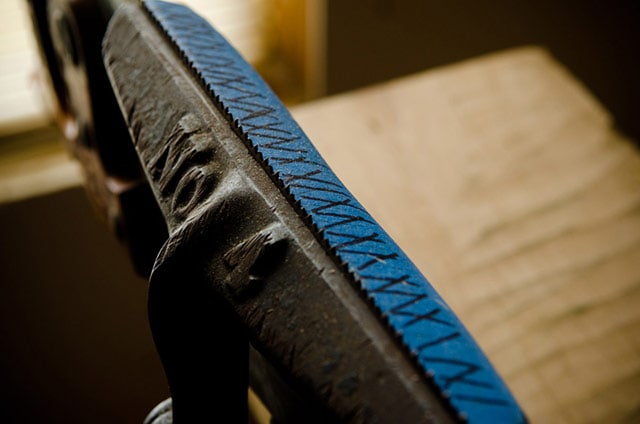
On one of my personal metal saw vises I attached blue painter’s tape and drew guide lines to assist with sawing at the appropriate fleam angle (see above). The metal saw vises clamp firmly onto a horizontal board or bench.
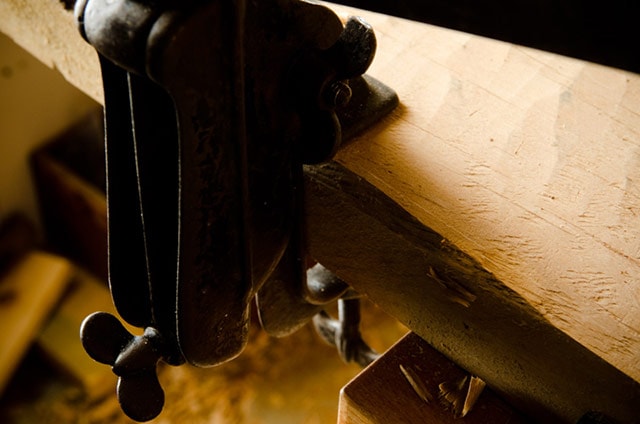
Some woodworking students that have taken classes at my school have purchased the The Gramercy Tools 14″ Saw Vise, and like it, but at $170 (update: now $250) I would personally just stick with finding antique saw sharpening vises. The Gramercy saw vise is based on the most popular vintage saw vise: the Wentworth No. 2 saw vise. The main differences that you’ll see in antique cast iron saw sharpening vises are:
- The way that they clamp the saw plate between the vise jaws.
- The way they clamp to your workbench (or a board, which then sits in your workbench vise).
- The size of saw plates that they will hold.
The latter consideration makes the biggest difference in price, but that feature really just saves you from having to move your saw as often, which may not be a big deal to you. The more sought after saw vises are about 14-inches wide. The smaller are under 11-inches.
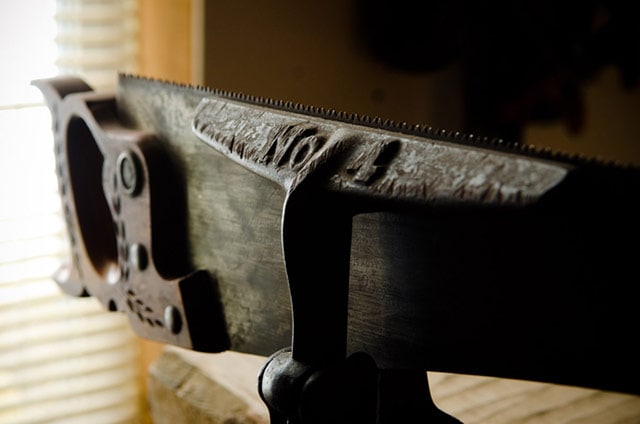
Antique hand saw vises are plentiful on Ebay, and run from $15 to about $70. Before buying a metal hand saw vise, just make sure there aren’t any broken parts to the casting, or it could weaken the saw vise. This could lead to splitting down the road (I’ve experienced this). The most common antique hand saw vises that you will find are Disston hand saw vises and Wentworth hand saw vises. I have used both vises extensively and like them both. Here are some saw vises that are popular:
Buy Triangular Saw Files
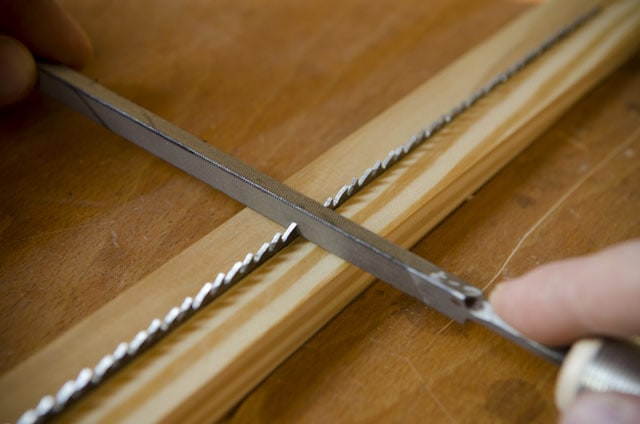
Triangular hand saw sharpening files are used to shape western-style hand saw teeth. These triangles are 60 degrees on each angle, so the space between your saw teeth will always be 60 degrees. The size of saw file to purchase depends on the size of the teeth on your hand saw (or the size of the teeth that you’re going to create). Smaller hand saw teeth (more teeth per inch) would require a smaller triangular file, while larger saw teeth require a larger triangular file.
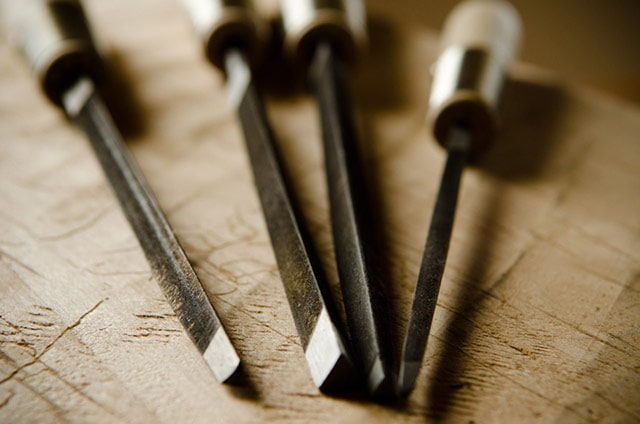
Pretty simple, huh? There are many charts to help you determine which size hand saw file is needed, but if you ever mix up your triangular saw files, just realize that you need each side of your triangular file to be twice the size of the saw tooth.
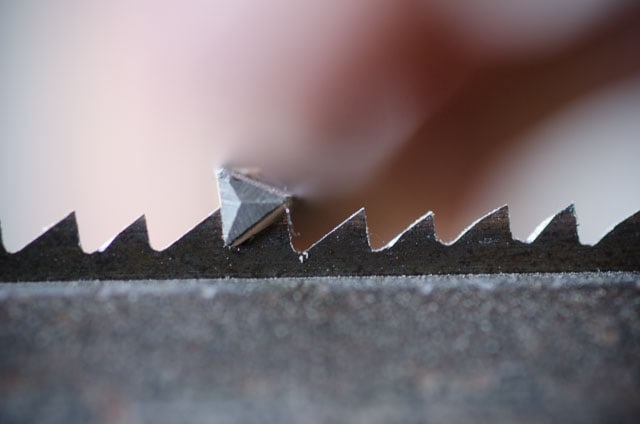
This will help you conserve your files and money because it allows you to use up both halves of a file side. Even though all files have the same 60 degree shape, using files that are too big will miss shape your teeth, because they have rounded edges, rather than sharp edges as found on small files. Here is a chart of recommended triangular hand saw file sizes (you can, of course, be a little flexible):
| Recommended Triangular File Sizes | |
| PPI | File Size |
| 4 – 5 1/2 | 7-in. regular taper |
| 6-7 | 7-in. slim taper |
| 8 | 6-in. slim taper |
| 9-10 | 6-in. extra slim taper |
| 11 | 6-in. double extra slim taper |
| 12-14 | 5-in. double extra slim taper |
| 15-20 | 4-in. double extra slim taper |
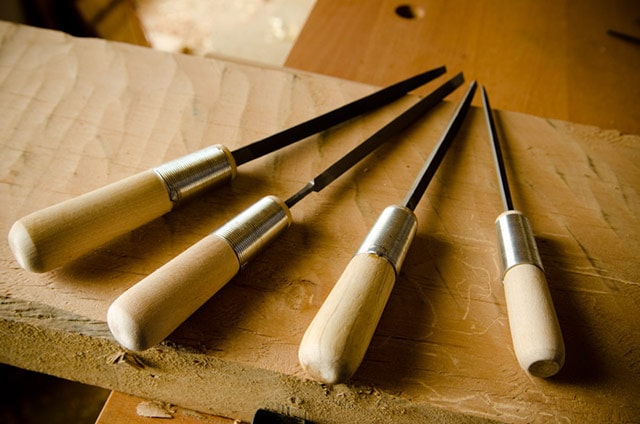
Not all triangular hand saw sharpening files are made to the same quality. Some of them wear out much faster than others. Here are some good file brands that I’ve used and some that have been recommended to me by other woodworkers and hand saw sharpeners:
Bahco saw files:
- See Bahco saw files at Amazon
- See Bahco saw files at Ebay
- See Bahco saw files at Lee Valley / Veritas
Grobet saw files (also branded as “Vallorbe” and “Glardon” in some areas):
- See Glardon / Grobet saw files at Amazon
- See Glardon / Grobet saw files at Ebay
- See Glardon / Grobe saw files at Highland Woodworking
Simonds saw files:
Nicholson saw files:
Nicholson saw files aren’t as quality as they used to be, but some people still like them…
Make or Buy a Hand Saw Sharpening File Holder
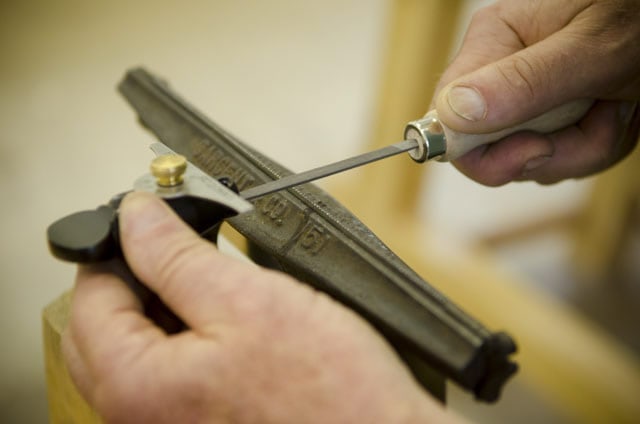
To accomplish uniform saw filing, it’s important to hold the triangular saw file at a consistent angle for each hand saw tooth. This can be accomplished as simply as attaching a small block of wood to your triangular saw file, or as sophisticated as using a store-bought hand saw file holder that fits on the end of your triangular saw sharpening files.
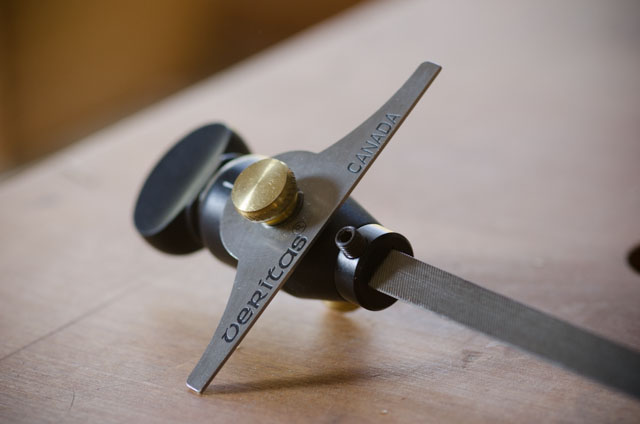
I’ve used both methods over the years, and can admit that I really love using a commercial file guide. I own the Veritas Saw File Holder.
Buy a Bastard Mill File & File Jointer
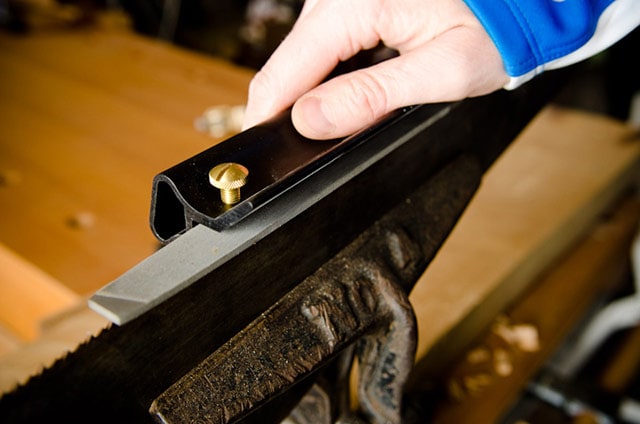
When saw sharpening, you’ll need a bastard mill file and a file jointer to hold it. A few passes with this setup will enable you to bring all the saw’s teeth down to the same height. I purchased this inexpensive bastard mill file and this Veritas Jointer/Edger.
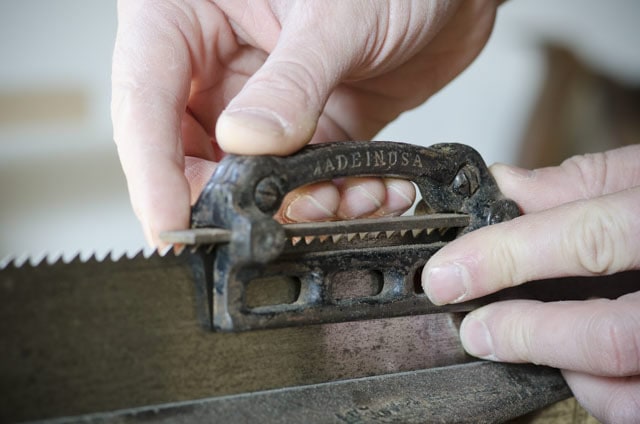
And here’s an antique pair that I use too, so you can keep your eyes open for them:
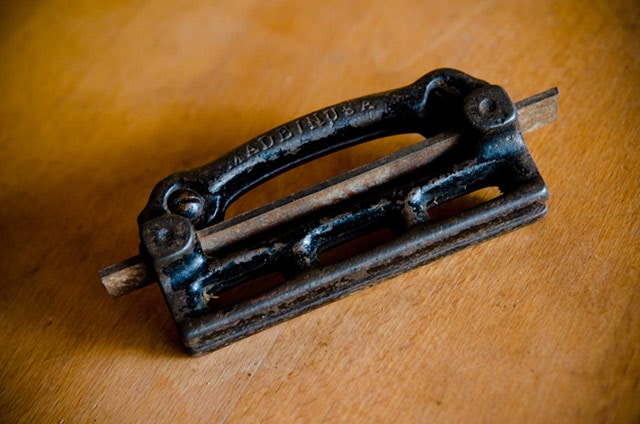
You can also simply fit your bastard mill file into a block of wood so it will cut at a 90 degree angle to your saw plate. You can search at these stores for bastard mill files:
Buy Two Handsaw Setting Tools
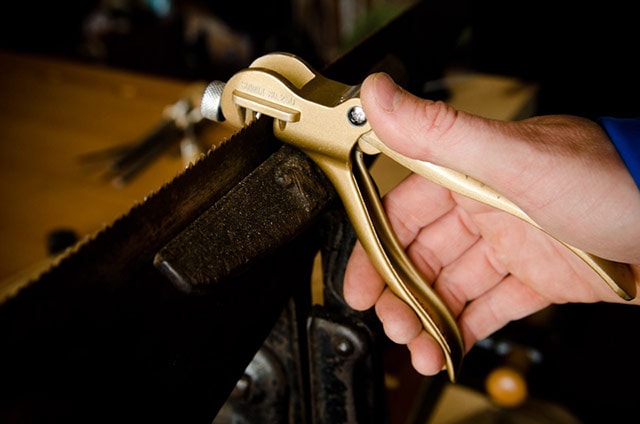
Adding “set” to handsaw blades, means using a tool to push the teeth one way or another to create a slightly wider “kerf” (saw track) and more even cutting. It also prevents your saw from “binding”, or getting stuck in the kerf.
A “Saw Set” is a simple, inexpensive, and mandatory saw sharpening tool. Stanley made some popular hand saw sets, including the No. 42 and No. 42X pistol grip saw sets. Tom Calisto (the handsaw maker featured in “Building an 18th Century Panel Saw with Tom Calisto“) loves the antique No. 42X.
This is what Jim Bode said about the Stanley No. 42X saw set: “The 42X is different from all the other 42s. It has a dual plunger. There is a larger, round plunger that activates first and grabs the saw blade. Inside the larger one there is a smaller one that activates next and does the setting. This makes for a more positive set with less effort.” You can find a vintage Stanley 42X saw set tool here on Ebay.
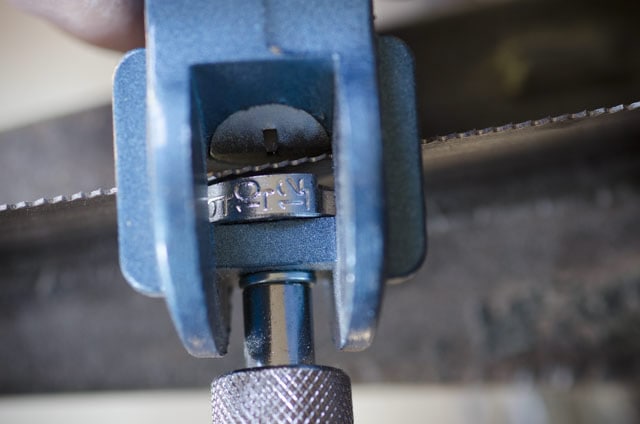
However the Stanley 42X can get expensive, and my hands feel cramped against the saw plate when using it. So I prefer saw sets that aren’t L-shaped. I really like the Japanese Somax No. 250 saw sets (about $25 each). They are based off of the Stanley No. 42X, but they aren’t L-shaped. They work great. These are the two sizes I use:
- Course saw set (Gold: for panel saws & back saws with larger teeth: 4-12 points per inch)
- Fine saw set (Blue: for back saws with finer teeth: 13-27 points per inch)
*Update: the Somax saw set tools seem to have been discontinued (for some strange reason) but you can still find them on Ebay here.
For a bit more money (unless you are lucky to find one in a flea market) you can also look for a this popular vintage saw set: Stanley No. 42 saw set. There are some other vintage saw sets easily found here on Ebay.
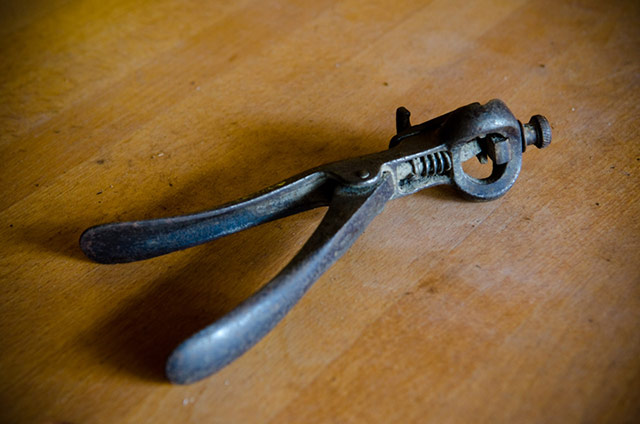
But as you can see, my new saw sets don’t require refurbishing…that way I can spend my time refurbishing my saws rather than my saw sets:
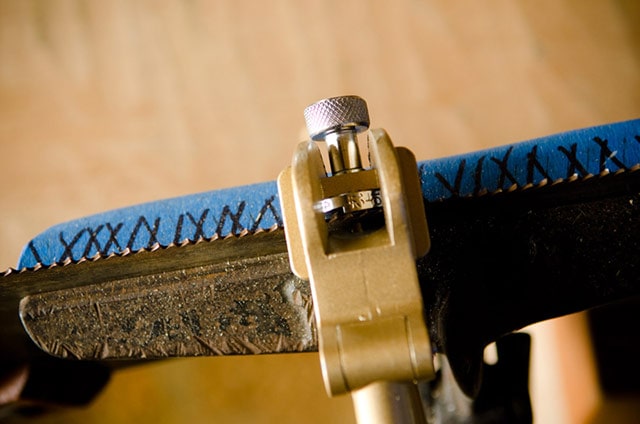
Continue to the Mallets & Hammers Buying Guide (#7)…
TOOL GUIDE SHORTCUTS:
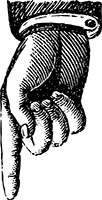
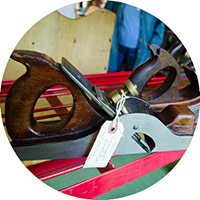
HAND TOOL BUYER’S GUIDES
- Intro to Buying Woodworking Hand Tools
- Workbench & Tool Storage
- Layout, Marking, & Measuring Tools
- Handplanes
- Handsaws
- Chisels
- Sharpening & Honing Supplies
- Mallets & Hammers
- Hand Drills, Braces, & Bits
- Tools for Curved Work
- Tools for Green Woodworking
- Woodworking Clamps, Gluing & Fasteners
- Tools for Wood Carving
- Products for Wood Finishing, Sanding & Scraping
- Wood Turning Tools & Lathes

